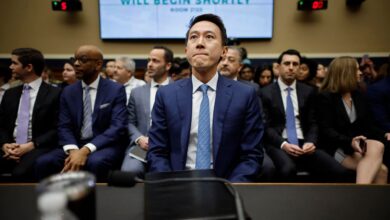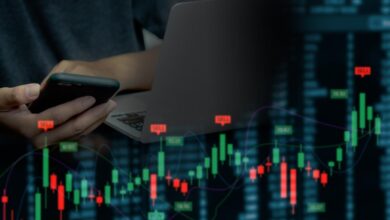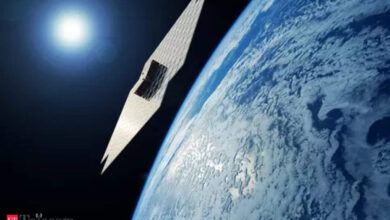Saudi Crown Prince MBS’ $100 Billion Foreign Investment Quest Falters

(Bloomberg) — At a gleaming white hangar on Saudi Arabia’s western coast last year, the kingdom’s business and political elite gathered to applaud one of Crown Prince Mohammed bin Salman’s riskiest bets yet.
Most Read from Bloomberg
The first electric cars assembled in Saudi Arabia with Lucid Group Inc. twinkled under factory spotlights, designed to show the world how a kingdom built on oil could draw in foreign capital to become a global hub for the industries of the future.
The short-term reality is more complicated. California-based Lucid is increasingly guzzling Saudi money to stay in business. Last week it got a $1 billion cash lifeline from the kingdom, on top of the $5.4 billion Saudi Arabia’s Public Investment Fund (PIF) has already pumped in.
Lucid, which counts the PIF as its top shareholder, had been held up as an example of foreign firms investing in Saudi Arabia’s multi-trillion-dollar “Vision 2030” economic transformation plan. But Lucid’s need for Saudi money is one sign the country’s rushed attempt at reinvention is being paid for out of pocket, with the kingdom relying heavily on its oil riches to entice firms in.
Read more: Lucid CEO Says Struggling EV Maker Is Crucial to Saudi Arabia
“The government had to give Lucid tremendous incentives to come,” said Karen Young, a Gulf-focused political economist at the Columbia University Center on Global Energy Policy.
It also speaks of the difficulties foreign companies face in Saudi Arabia, a country with little experience of complex manufacturing or heavy industry beyond the petroleum sector.
“Lucid is fully committed to our long-term partnership with the PIF and supporting the goals of Saudi Arabia’s Vision 2030,” Chief Executive Officer Peter Rawlinson said in a statement to Bloomberg. “Lucid is creating hundreds, and eventually thousands, of new employment opportunities for Saudi talent.”
The PIF did not respond to a request for comment.
Saudi Arabia has long recognized its funding requirements would mostly be backed by local capital and only partly by foreign money. Still, it wants to hit $100 billion of foreign direct investment annually by 2030, a haul roughly three times bigger than it has ever achieved and about 50% more than what India gets today. Between 2017-2022 annual FDI inflows into the kingdom averaged just over $17 billion. Preliminary data for 2023 shows FDI below target, at about $19 billion, according to a statement from the Ministry of Investment.
Scaling up to the 2030 goal seems out of reach for now as foreign investors remain cautious, according to conversations with bankers, lawyers who advise investors and people with knowledge of Saudi Arabia’s fundraising efforts.
Read more: Saudi Budget’s Back to Old Ways as Oil Habit Proves Hard to Kick
That’s led to a reckoning for the government as it weighs up the possibility of self-funding a larger portion of its economic remake on a tight timeline. Already, it has started to cut back on megaprojects designed to revamp its $1.1 trillion economy. And it’s issuing billions of dollars in bonds to help plug a fiscal deficit that it hadn’t been forecasting until late last year.
How it wields its money carries implications for its investments at home and abroad, and for oil policies that shape global markets.
‘Insanely Expensive’
The crown prince, or MBS as he is known, wants foreign investors to transfer expertise and co-fund megaprojects like the one to develop Neom. That $500 billion plan envisions turning the remote north-western region into a carbon-free high tech hub filled with robots.
While Neom has rolled out marketing and investor roadshows, it’s not made serious progress raising capital yet, people familiar with the matter said.
It’s not just along the less-developed coastline that projects are facing headwinds. Near the capital, an entertainment city dubbed Qiddiya has more than $1 trillion of committed spending — but that’s backed entirely by the PIF and a Saudi developer it owns, two people briefed on the project said.
“If we don’t have clear evidence of more funding by the end of the year, then it’s certainly worth asking where the money is going to come from for these projects,” said David Dawkins from London-based investment data firm Preqin, which analyzes Saudi trends. “They are insanely expensive.”Delays approving regulations for Neom have left question marks for investors. Many say their reluctance to commit funds to the kingdom is often down to unclear and untested laws governing contracts and investment.
There are signs the push for more external capital is gaining traction. There were 232 investment deals closed in 2023, many of which have “sizable” components of foreign investments that may start “working their way” into 2024 FDI numbers, the Ministry of Investment said in a statement.More recently, Amazon.com Inc.’s cloud unit led a group of firms that agreed to invest more than $10 billion in Saudi data centers. Read more: Saudi Manufacturing Push Draws SoftBank, China Surveillance Firm
Shrinking Money Pot
But the government, burning through cash, is stepping up efforts to attract much more foreign money. It asked smaller neighbor Kuwait for over $16 billion in financing for projects including Neom as recently as this year, people familiar with the matter said.
At stake for MBS are ambitions synonymous with Vision 2030. While companies like US-based Air Products have signed on for joint ventures at Neom, Saudi Arabia is still on the hook for underwriting close to the entirety of the cost — roughly equivalent to half its current economic output.
“It’s effectively still a public sector-led development model,” said Monica Malik, chief economist at Abu Dhabi Commercial Bank PJSC. “At the moment they’re using all their pockets of strength for this transformation plan and I think going forward it will still be predominantly a Saudi-led development plan.”
How Saudi Arabia spends its cash will resonate around the world given its investing footprint now extends from a London airport to golf and private equity, making it a critical source of funds for Wall Street and governments alike. As the kingdom fills in the financing gaps at home, it will be leaning on earning money from the way it knows best: oil.
Read more: Saudi Arabia Banks Embark on Record Bond Binge for Mega-Projects
That realization is ushering in an approach that consolidates spending power in the hands of the PIF. The kingdom recently gave the fund an additional $164 billion stake in Saudi Aramco, which will translate into a dividend payment of at least $20 billion this year.
The move is basically “raising money from one public pocket at the expense of the other,” said Mohamed Abu Basha, head of research at Cairo-based investment bank EFG Hermes.
It shows how the kingdom remains reliant on on high oil prices to sustain its diversification plans, he said.
Saudi Arabia is likely to advocate longer production curbs by OPEC+, the oil cartel it leads along with Russia, that have helped prop up prices, said Jean-Michel Saliba, Bank of America Corp.’s Middle East and North Africa economist.
Yet for all that the cuts have restricted supply, prices remain below what the crown price requires to fund his grand ambitions. When accounting for domestic spending by the PIF, the kingdom needs crude of at least $108 a barrel to balance its budget, according to Bloomberg Economics. Brent’s jumped in recent weeks but remains below $90.
Mind the Gap
The PIF is feeling the pinch already. It controls assets of about $900 billion but had just $15 billion in cash reserves as of September.
Read More: Saudi Wealth Fund Eyes Bond Sales, IPOs to Finance Spending Ambitions
The fund, which previously deployed almost 30% of its capital for international investments, is now targeting an allocation of 20% to 25%, though the absolute number is still set to rise over time, according to its governor, Yasir Al-Rumayyan.
“Our deployment will continue internationally but our focus right now is on the projects that we have in Saudi Arabia,” he said in February.
Finance Minister Mohammed Al-Jadaan has also acknowledged a funding shortfall and flagged the issuance of more debt. He’s been part of a committee chaired by MBS that studied Vision 2030’s massive financing needs and set them against the kingdom’s expected revenue streams.
“There was a gap,” he told the Thmanyah’s Socrates podcast. “We called it the Gap Study.”
Postponing and scrapping some projects will plug that hole, he said, without going into detail.
Read More: Saudi Arabia Says for First Time Some 2030 Projects Delayed
That marks a crossroads for some of Saudi Arabia’s most ambitious projects. Those in Riyadh, where Expo 2030 is due to take place, may start taking priority. And some like Lucid will see the kingdom committing even more funds, not less. The kingdom sees it as part of a wider plan to build an autos supply chain, in which the PIF is also partnering with Hyundai Motor Co. and suppliers such as Italian tire-maker Pirelli & C. SpA.
But other Vision 2030 dreams will fade or be cut back, according to people familiar with the matter.
“Some of them were strategies where we said to ourselves: we actually do not need to spend on this,” Jadaan said.
–With assistance from Abeer Abu Omar, Fiona MacDonald, Dinesh Nair and Matthew Martin.
Most Read from Bloomberg Businessweek
©2024 Bloomberg L.P.





